Everyone who has taken on a rescue horse, or a horse from families who have passed them on, or a horse they have purchased, but then found the horse really is a rescue – experience the great unknown.
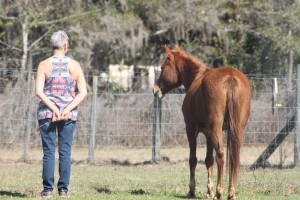 People also say that when they buy a horse for a specific purpose, often the horse isn’t as they had expected in some ways. It all depends on past handling and what the horse was asked to do, and how she was trained. So, to take this a step further, perhaps every horse is a great unknown.
People also say that when they buy a horse for a specific purpose, often the horse isn’t as they had expected in some ways. It all depends on past handling and what the horse was asked to do, and how she was trained. So, to take this a step further, perhaps every horse is a great unknown.
In the case of rescue, abuse or neglect (sometimes this is one and the same), we may know some of the back story, but we don’t know the exact details. Fallout from abuse can manifest in many ways: aggression, submissiveness, shut down-ness, jumpiness, fearfulness, completely frozen, food obsession, poor socialization – the list can go on and on. The difference between this horse and one you have raised and trained, or you have gotten from someone you know who has raised and trained it with kindness, is the baggage the abused horse comes with.
Recently a man who rescued a horse said of him, “he’s not like my other horses.” He had raised his other horses from foals, and was unprepared for the PTSD the new horse exhibited.
When you bring the horse home, generally the primary objective is getting them 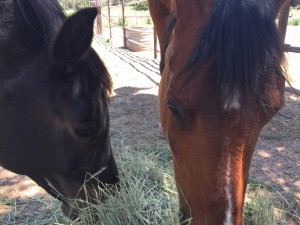 nutritionally sound and seen by the veterinarian. Many horses have been starved. In recent years, many more horses have lost their homes and come on hard times. Some have spent brief times in kill lots or chased down by helicopters by the BLM, and then held in holding pens, separated from their families. Whatever the case, there trauma in these horses that you may not have anticipated.
nutritionally sound and seen by the veterinarian. Many horses have been starved. In recent years, many more horses have lost their homes and come on hard times. Some have spent brief times in kill lots or chased down by helicopters by the BLM, and then held in holding pens, separated from their families. Whatever the case, there trauma in these horses that you may not have anticipated.
Most of us are not horse psychology majors. Some say all you have to do with a rescue horse is feed them and love on them, and they’ll come around. That may work for some of them. But it won’t work for all. It especially won’t work for the aggressive horse, the one who has fought back against abuse or mistreatment.
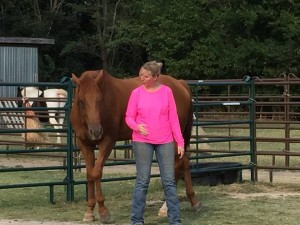 Some horses are so afraid of people, they take awhile to warm up. They may be difficult to catch. They may not make eye contact. They may jump sideways at a plastic bag stuck to the fenceline, dry leaves skittering across the ground.
Some horses are so afraid of people, they take awhile to warm up. They may be difficult to catch. They may not make eye contact. They may jump sideways at a plastic bag stuck to the fenceline, dry leaves skittering across the ground.
Remember too, that each physical abuse has registered itself within the body. The body has a cellular memory of everything that has ever happened. How the horse processes and deals with that abuse will differ with each individual. While you may have healed the outside of the horse – he looks pretty good now, there is still a lot of work to do.
In some very sad cases, the damage is irreparable, and though we may have great expectations of rehabilitating the horse, with all good intentions and care, it may not be possible. There are situations where the horse must be returned to the rescue or BLM, because they are dangerous or otherwise unsuitable for domestic life. It is not the fault of the owner; often the new owner has tried everything to no avail.
For those that we can help, deep energetic bodywork will do wonders to peel back layers and address trauma, letting 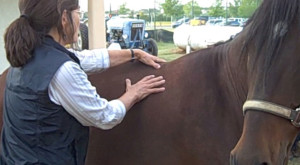 it release gently and gradually, through the feet, the head and neck, the pelvis and tail, the thoracic and lumbar spine, the ribs. Sometimes the horse can’t bear physical contact in some of these places, or any of them, and it takes time, small trust building, to bring him around, to know the truth of his own body and its needs. To be able to safely reach out to people or allow them near.
it release gently and gradually, through the feet, the head and neck, the pelvis and tail, the thoracic and lumbar spine, the ribs. Sometimes the horse can’t bear physical contact in some of these places, or any of them, and it takes time, small trust building, to bring him around, to know the truth of his own body and its needs. To be able to safely reach out to people or allow them near.
Kindness will do wonders. Giving the horse choices will also do wonders. Many horses come through Liberty Foundations and finally, for the first time in their lives, they are given 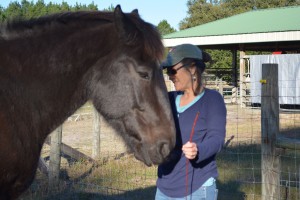 choices with their people.
choices with their people.
The horse can begin to heal from within, once his desperate need for proper feeding and veterinary care has been taken care of.
The expectations of the new owner can be overwhelming to the new horse, who has probably been bounced around to a few homes beforehand, or has had some traumatic beginning like most BLM mustangs. The new scents and feed, movements and energy of the new people and place, are full of sharp edges to take the horse’s breath away. Where am I? Where am I going? Will I be moved and sold again? Will they hurt me? What’s next?
Even the simple expectation of lifting feet, putting a halter on, can seem like a lot. The horse can learn and access self-correction when it is not being threatened, in a climate of peace and introspection, being in the moment, listening and responding.
Being quiet around the new horse, hearing the birdsong with her, watching the horizon with her, will help bring her into community with you. A hand on her wither/shoulder connection will connect you – horse to human, human to horse.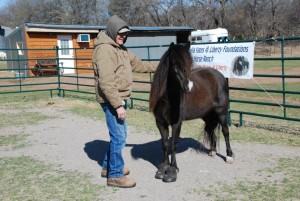
Hopefully, the great unknown slowly and unequivocably melts away, unimportant, as the blossoming of the horse’s fragile confidence reveals glimpses of personality that may have been suppressed, for what has seemed like a thousand years.
(c) Susan Smith, OrthoHorse, Horses at Liberty Foundation Training, Equine Body Balance (TM)
Please see my
Events for information on upcoming clinics and workshops.



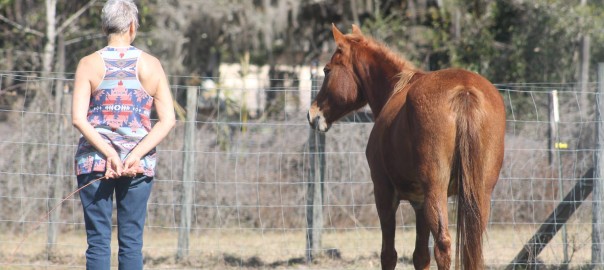
thank you i have a horse who’s mental trauma due to bullfighting is very hard to reach and i see from your article that what i am doing (albeit very slow) is correct and he is responding to me, thank you. Simple expectations……
In my part of the world, we don’t encounter horses who have the job of bullfighting, but I can imagine it’s a very stressful job. Treating your horse with kindness and respect, you’re getting good results. Good luck!